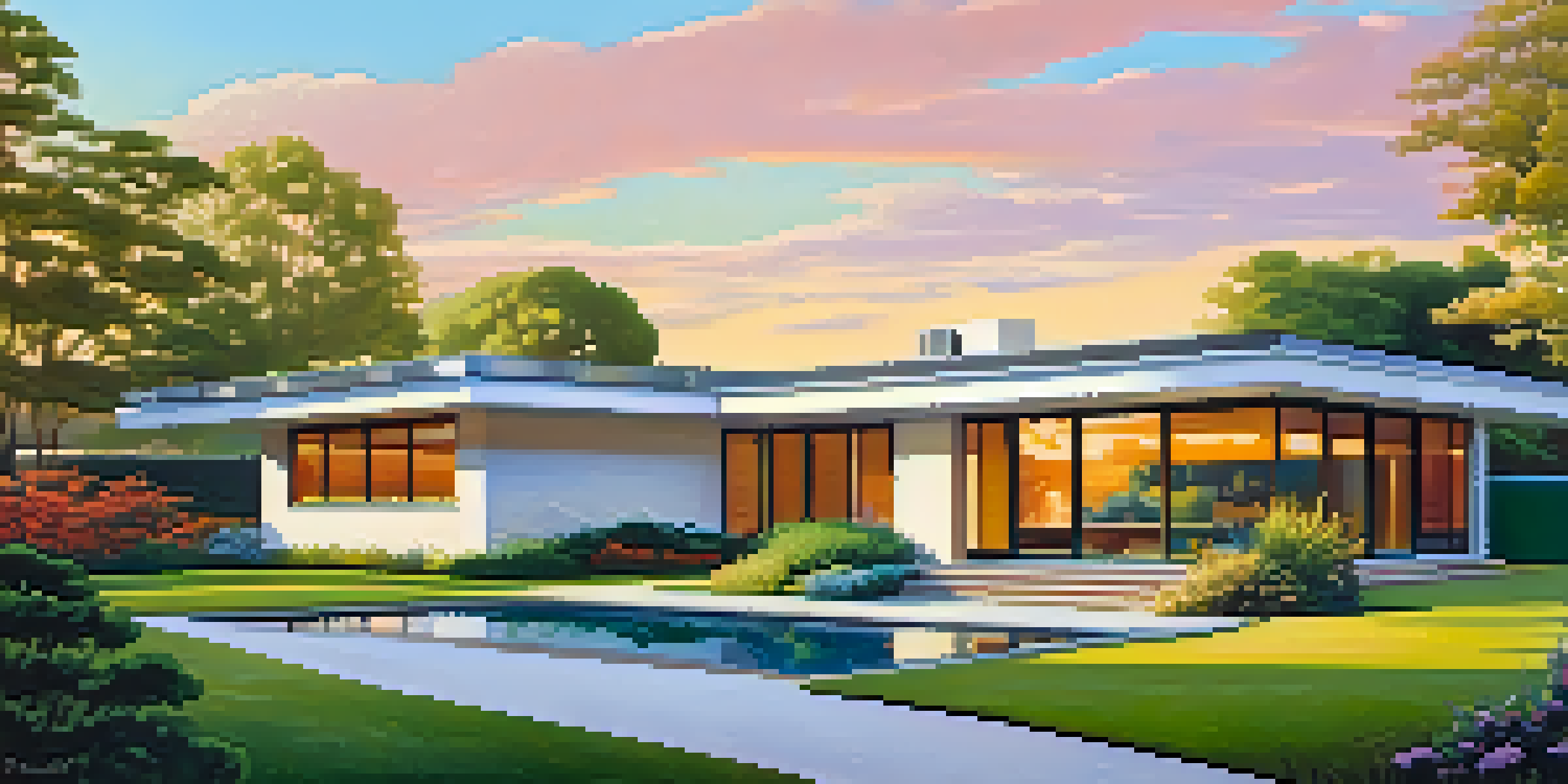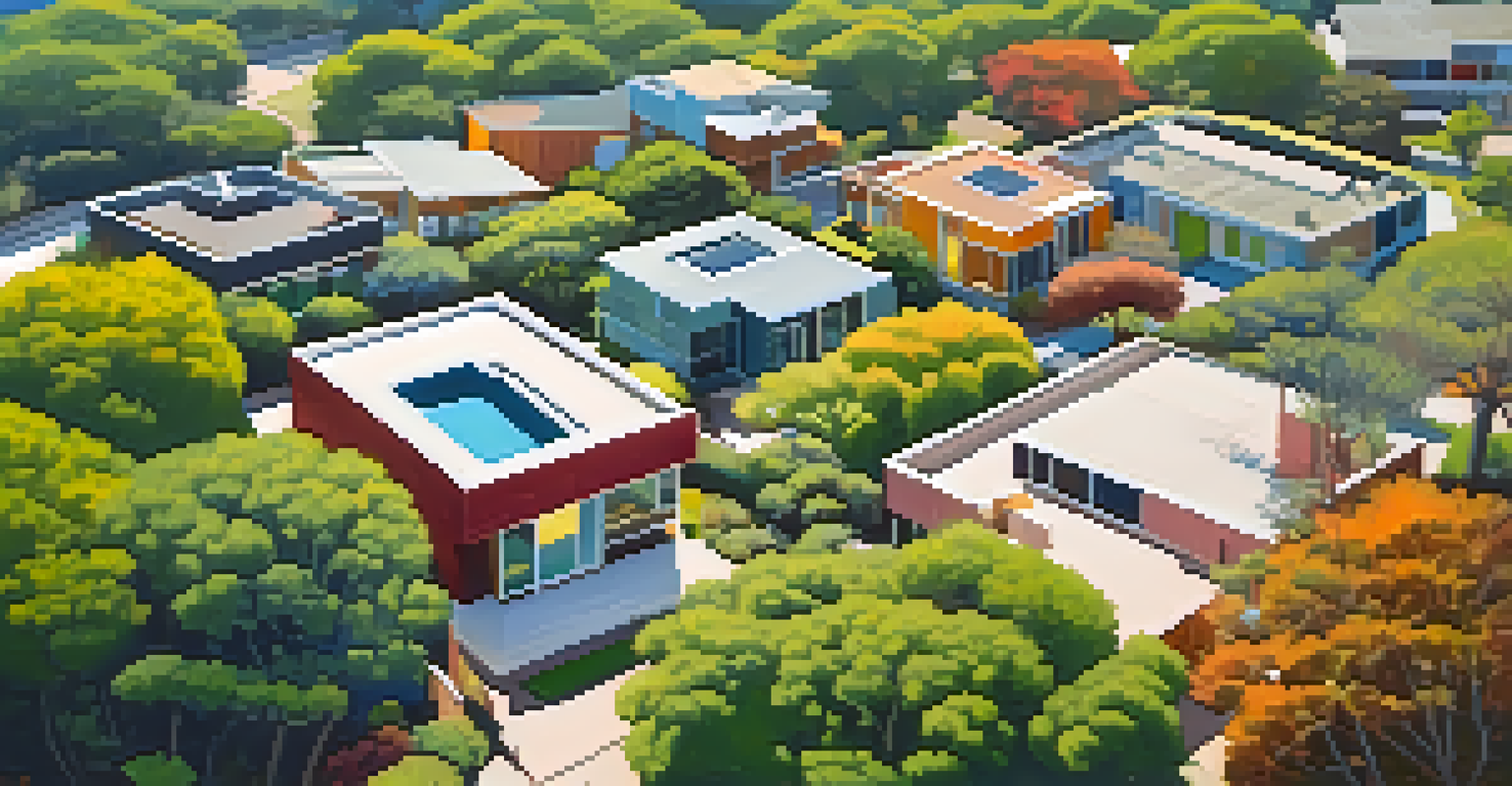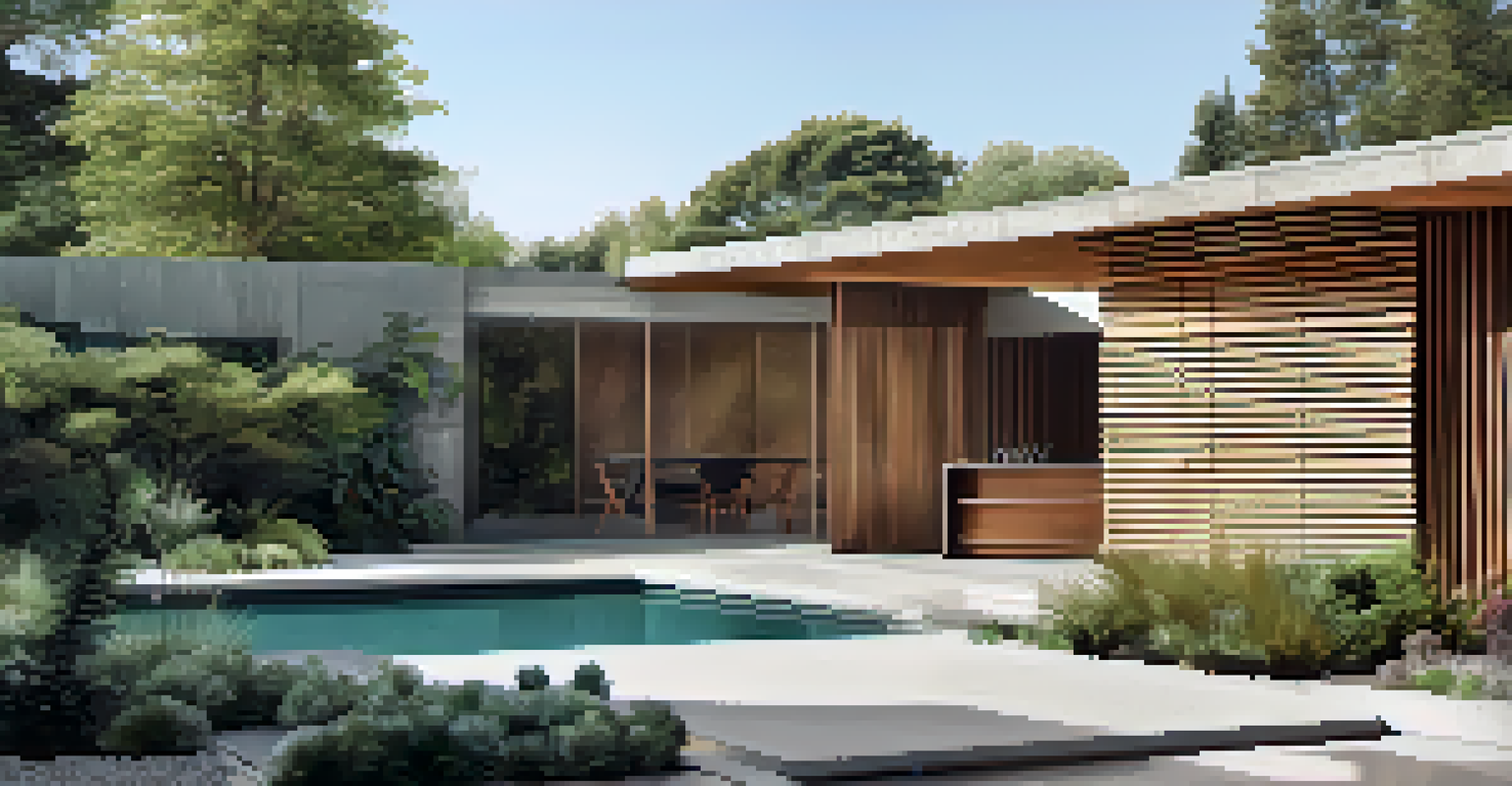Mid-Century Modernism: Austin's Unique Architectural Gem

What is Mid-Century Modernism and Why It Matters
Mid-Century Modernism is an architectural style that emerged in the mid-20th century, characterized by clean lines, open spaces, and a strong connection to nature. This movement aimed to create a harmonious relationship between the indoors and outdoors, often incorporating large windows and organic materials. In Austin, this style not only reflects a significant period in design history but also showcases the city’s unique cultural identity.
Good design is innovative. It allows the user to have a better experience, but it also must be functional and affordable.
The importance of Mid-Century Modernism lies in its innovative approach to residential and commercial spaces. Architects sought to break away from traditional design norms, favoring functionalism and simplicity. This shift has influenced countless designers and remains relevant in contemporary architecture, making it essential to understand its roots.
In Austin, the Mid-Century Modern movement resonates with both residents and visitors. It embodies a spirit of creativity and forward-thinking, attracting those who appreciate its aesthetic and historical significance. As you explore the city, you’ll find that these structures tell a story of innovation and cultural evolution.
Austin's Architectural Landscape: A Mid-Century Overview
Austin is home to an impressive collection of Mid-Century Modern buildings, each with its own story to tell. Iconic structures like the Armadillo World Headquarters and various residential homes showcase the ingenuity and artistic vision of the era. This unique architectural landscape contributes to Austin's identity as a vibrant and diverse city.

Throughout the 1950s and 1960s, Austin experienced a boom in Mid-Century design, with architects like A.D. Stenger and O'Neil Ford leading the charge. Their work not only transformed the city’s skyline but also reflected the social and cultural dynamics of the time. Today, their legacy continues to inspire new generations of architects and designers.
Defining Mid-Century Modernism
Mid-Century Modernism is an architectural style that emphasizes clean lines, open spaces, and a strong connection to nature, significantly influencing contemporary design.
As you stroll through neighborhoods like Tarrytown and West Lake Hills, you'll encounter stunning examples of this architectural style. These homes often feature low-slung roofs, expansive glass walls, and natural materials that blend seamlessly with the landscape, inviting you to appreciate the beauty of Mid-Century Modernism.
Key Features of Mid-Century Modern Homes
Mid-Century Modern homes are easily recognizable thanks to their distinctive features. Characteristics such as flat planes, large glass windows, and open floor plans create a sense of spaciousness and light. These elements not only enhance the aesthetic appeal but also promote a lifestyle centered around comfort and functionality.
Architecture is the learned game, correct and magnificent, of forms assembled in the light.
Another hallmark of this architectural style is the integration of nature. Many Mid-Century homes include outdoor living spaces and landscaping that emphasizes the natural surroundings. This connection to the outdoors fosters a sense of tranquility and encourages residents to enjoy the beauty of their environment.
Additionally, the use of innovative materials such as plywood, steel, and concrete reflects a departure from traditional building methods. These materials allow for creative freedom and versatility, resulting in unique designs that stand the test of time. The thoughtful combination of these elements makes Mid-Century Modern homes truly special.
Notable Mid-Century Modern Architects in Austin
Austin's Mid-Century Modern scene boasts several influential architects who played a pivotal role in shaping its architectural landscape. A.D. Stenger, often referred to as the 'father of modern architecture' in Austin, designed numerous iconic homes that exemplify the style. His commitment to blending architecture with the natural environment is evident in his many residential projects.
Another notable figure is O'Neil Ford, who was instrumental in promoting Mid-Century design in Texas. His work encompassed a range of buildings, from homes to educational institutions, all characterized by their innovative use of materials and forms. Ford's ability to harmonize structures with their surroundings makes his work a cornerstone of Austin's architectural heritage.
Austin's Architectural Heritage
Austin boasts a rich collection of Mid-Century Modern buildings, showcasing the innovative contributions of local architects like A.D. Stenger and O'Neil Ford.
These architects not only contributed to the aesthetic appeal of the city but also influenced future generations of designers. Their visionary ideas and dedication to creating functional spaces continue to inspire those who appreciate the beauty of Mid-Century Modernism.
Preserving Austin's Mid-Century Modern Heritage
As Austin continues to grow and evolve, the preservation of its Mid-Century Modern architecture becomes increasingly important. Many of these structures face the risk of demolition or alteration due to urban development. Preservation efforts are essential to maintain the city’s architectural diversity and historical significance.
Organizations dedicated to preserving Mid-Century Modern architecture work tirelessly to raise awareness and advocate for these unique buildings. They promote education about the importance of preserving architectural heritage and engage the community in restoration projects. Such initiatives foster a sense of pride in Austin’s cultural identity.
Community involvement plays a crucial role in these preservation efforts. Residents can participate by supporting local preservation groups, attending events, or even advocating for specific buildings. By coming together to protect these architectural gems, the community not only honors the past but also enriches the future.
Exploring Austin's Mid-Century Modern Neighborhoods
To truly appreciate Austin's Mid-Century Modern architecture, a visit to its neighborhoods is a must. Areas like Crestview and Barton Hills showcase a variety of stunning homes that exemplify the style. Walking through these neighborhoods offers a glimpse into the past while allowing you to experience the charm of modern living.
Each neighborhood tells its own story, reflecting the unique character and history of the area. For instance, the homes in Crestview often feature bright colors and geometric shapes, reminiscent of the playful spirit of the era. Meanwhile, Barton Hills boasts more organic designs that blend seamlessly with the natural landscape.
Preservation Efforts Are Vital
Preserving Austin's Mid-Century Modern architecture is essential to maintaining the city's historical significance and cultural identity amid urban development.
Exploring these neighborhoods not only provides an opportunity to appreciate the architectural beauty but also fosters a deeper connection to the local community. By engaging with residents and discovering their stories, you’ll gain a richer understanding of Austin's Mid-Century Modern legacy.
The Future of Mid-Century Modernism in Austin
As trends in architecture continue to evolve, Mid-Century Modernism remains relevant in Austin’s design landscape. Many contemporary architects draw inspiration from this style, incorporating its principles into new projects. This blending of old and new creates a dynamic architectural dialogue that enriches the city’s aesthetic.
The increasing popularity of Mid-Century Modern homes also influences real estate trends. Buyers often seek out these unique properties for their historical significance and timeless appeal. As appreciation for this style grows, it encourages more people to engage with and preserve Austin's architectural heritage.

Looking ahead, the future of Mid-Century Modernism in Austin appears bright. With ongoing preservation efforts, innovative design, and a community dedicated to honoring the past, this architectural gem will continue to thrive. By celebrating and protecting this heritage, Austin can embrace a future that respects its rich history while fostering creativity and innovation.